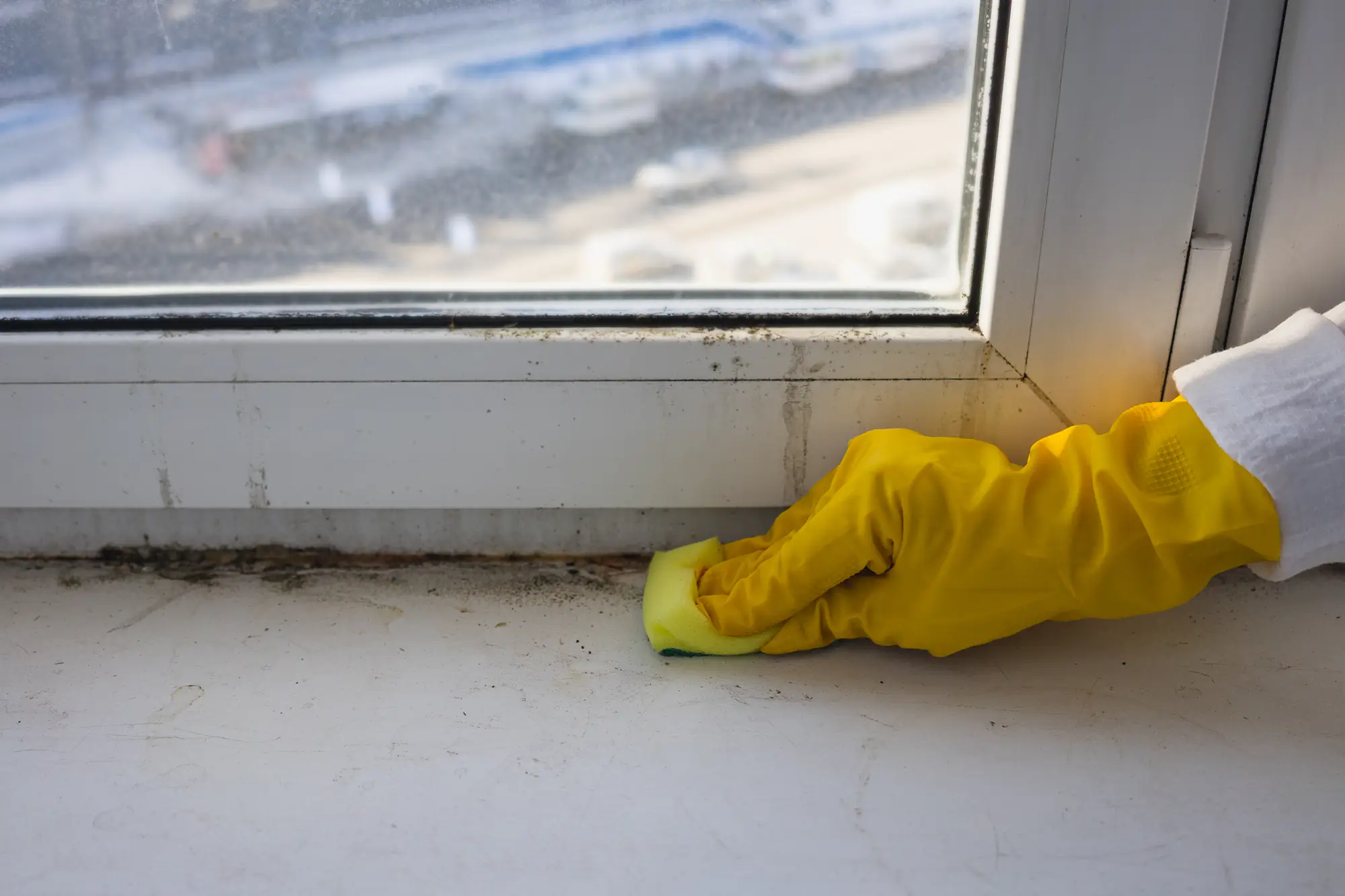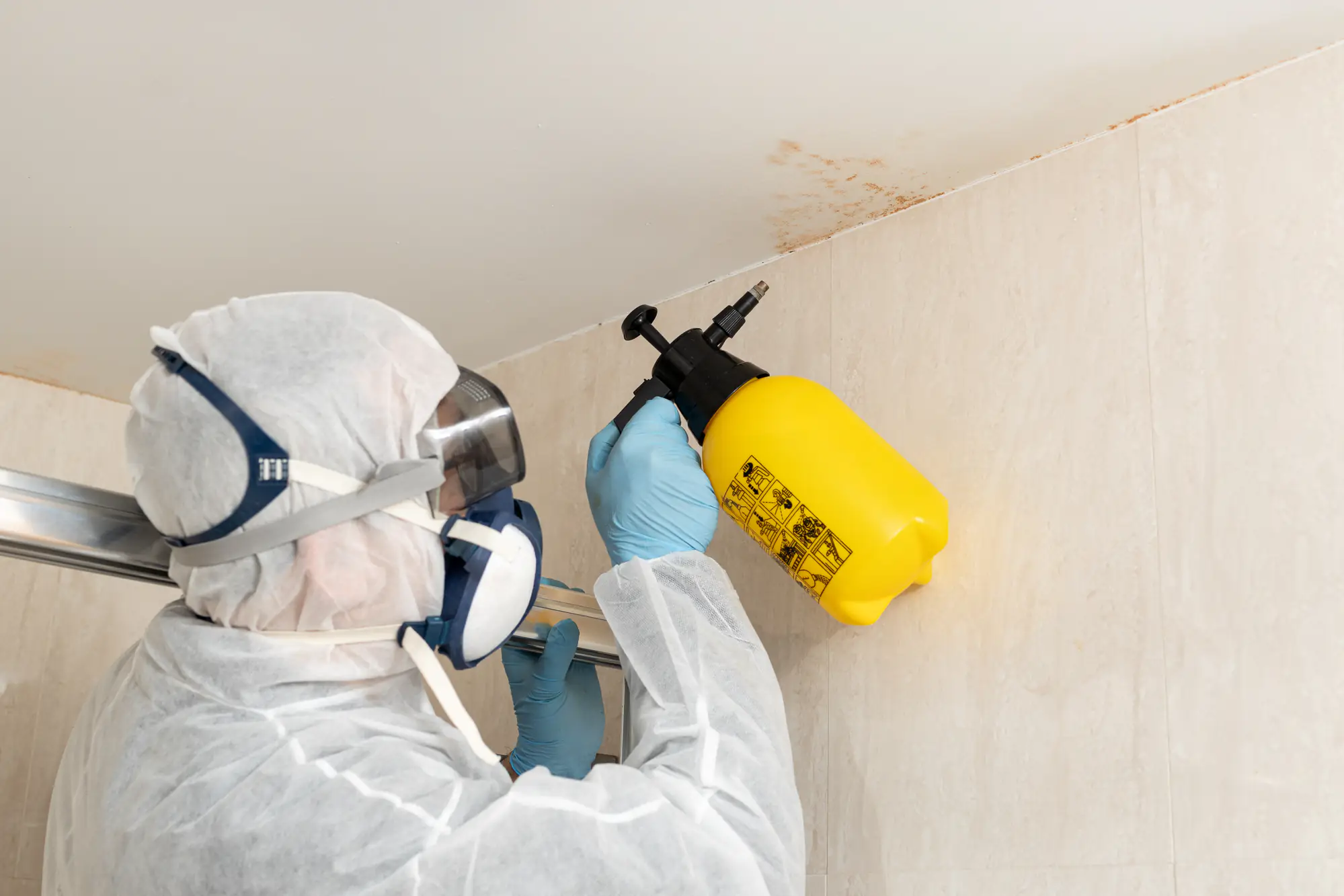
Hear from Our Customers

You wake up breathing easier. Your kids stop coughing at night. That musty smell that’s been driving you crazy? Gone.
When mold is properly removed, your home becomes the safe haven it should be. No more worrying about what’s growing behind your walls or whether that strange odor means something dangerous is spreading. You get peace of mind knowing the job was done completely—not just surface cleaning, but true remediation that addresses the root cause.
The difference is immediate. Better air quality means fewer headaches, less fatigue, and no more respiratory irritation. Your property value stays protected, and you avoid the nightmare of dealing with structural damage down the road.
We’ve been serving Ardmore and the Main Line community for years. We understand what makes mold thrive in this area—the humid Pennsylvania climate, the beautiful old homes with their unique ventilation challenges, and the way moisture can hide in places you’d never think to look.
Living in Ardmore’s historic community presents specific mold challenges. These older homes, while charming, often have outdated ventilation systems and construction methods that create perfect conditions for mold growth. We’ve seen it all: basement moisture issues from stone foundations, attic problems from poor insulation, and hidden mold behind walls where modern materials meet century-old structures.
Our team knows exactly where to look and how to address these problems permanently. We’re not just mold removal specialists—we’re your neighbors who understand what it takes to keep Ardmore homes healthy and safe.

First, we inspect everything. Not just the obvious spots, but the places mold loves to hide—behind walls, under floors, in crawl spaces, and around HVAC systems. We use specialized equipment to detect moisture and mold that isn’t visible to the naked eye.
Next comes containment and removal. We seal off affected areas to prevent spores from spreading to clean parts of your home. Then we remove contaminated materials safely, using EPA-approved methods and industrial-grade equipment. We don’t just clean what you can see—we eliminate the source of the problem.
Finally, we restore and prevent. After removing all traces of mold, we address the underlying moisture issues that caused the problem in the first place. This might mean improving ventilation, sealing leaks, or recommending dehumidification. We also restore damaged areas, so your home looks and feels completely normal again. The goal isn’t just to remove mold—it’s to make sure it doesn’t come back.

Ready to get started?
Your mold remediation includes thorough inspection, safe containment, complete removal, and prevention measures. We handle everything from initial testing to final restoration, so you don’t need multiple contractors or confusing coordination between different companies.
In Ardmore, we see specific patterns. Many homes built in the early 1900s have stone foundations that can develop moisture issues over time. Row homes and twins often share humidity problems that affect multiple units. Properties near the train lines sometimes experience vibration-related settling that can create small cracks where moisture enters.
We also provide detailed documentation for insurance claims, air quality testing before and after treatment, and ongoing monitoring recommendations. You get a comprehensive solution that addresses your specific property’s needs, not a one-size-fits-all approach. Every job includes our satisfaction guarantee and follow-up support to ensure the problem stays solved.

Look for visible signs like dark spots on walls or ceilings, but don’t rely on sight alone. Mold often grows in hidden areas first. Pay attention to musty odors that don’t go away, especially in basements, bathrooms, or areas that have had water damage.
Health symptoms can also indicate mold exposure—persistent coughing, headaches, or allergy-like symptoms that seem worse at home. In Ardmore’s older homes, check around windows, in basements with stone foundations, and near any areas where you’ve had leaks or water intrusion.
The most reliable way to know for sure is professional testing. We can detect mold that’s not visible and identify specific types, which helps determine the best treatment approach. Many homeowners are surprised to learn they have mold in areas they never suspected.
Insurance coverage for mold depends on what caused the problem. If mold resulted from a sudden, covered event like a burst pipe or storm damage, there’s a good chance it will be covered. However, mold from long-term issues like leaky plumbing, poor ventilation, or high humidity typically isn’t covered.
Most policies have specific limits for mold remediation, often between $1,000 and $10,000. Some insurers offer additional mold coverage endorsements that can increase these limits. The key is timing—insurance companies want to see that you addressed water damage quickly and didn’t let mold develop due to neglect.
We work directly with insurance companies and can help document your claim properly. We know what adjusters look for and can provide the detailed reports and photos needed to support coverage. Even if insurance doesn’t cover everything, we offer financing options to make treatment affordable.
Most residential mold jobs take between one and five days, depending on the extent of contamination and the size of affected areas. Small problems like bathroom mold might be resolved in a day or two, while larger issues involving multiple rooms or structural materials can take a week or more.
The process includes inspection, containment setup, removal, drying, and final testing. We can’t rush any of these steps—proper containment prevents spreading mold to clean areas, and thorough drying prevents regrowth. In Ardmore’s humid climate, drying times can be longer, especially in basements or areas with poor ventilation.
We’ll give you a realistic timeline upfront and keep you informed of any changes. Most families can stay in their homes during treatment, though we might recommend temporary relocation if contamination is extensive or involves living areas where containment isn’t practical.
Small surface mold in areas like bathroom tiles might be manageable with proper precautions, but most mold problems require professional treatment. DIY cleaning often makes things worse by spreading spores to previously uncontaminated areas or missing hidden mold that continues growing.
Mold removal isn’t just about scrubbing visible growth. It requires identifying all affected materials, proper containment to prevent cross-contamination, specialized equipment for safe removal, and addressing underlying moisture problems. Without proper equipment and training, you risk exposure to dangerous spores and incomplete remediation.
In Ardmore homes, mold problems are often more extensive than they appear. What looks like a small patch on a basement wall might indicate extensive growth behind drywall or in insulation. Professional assessment can determine the true scope of the problem and ensure complete, safe removal that prevents recurrence.
Ardmore’s location and housing characteristics create specific mold challenges. The area’s humid Pennsylvania climate, combined with proximity to water sources and frequent rainfall, provides ideal conditions for mold growth. Humidity levels often exceed the 60% threshold where mold begins thriving.
Many Ardmore homes were built in the early 1900s with construction methods and materials that handle moisture differently than modern buildings. Stone foundations, older ventilation systems, and settled structures can develop moisture entry points over time. Row homes and attached properties can share humidity problems between units.
The tree-lined streets that make Ardmore beautiful also contribute to higher local humidity levels. Mature trees release moisture into the air, and fallen leaves can create drainage issues around foundations. These factors, combined with aging infrastructure and occasional flooding from heavy rains, make professional mold prevention and treatment especially important for local homeowners.
Prevention starts with moisture control—the fundamental requirement for mold growth. We identify and address all moisture sources, whether from leaks, poor ventilation, high humidity, or water intrusion. This might involve sealing foundation cracks, improving bathroom ventilation, or recommending dehumidification systems.
Proper ventilation is crucial in Ardmore’s humid climate. We evaluate your home’s air circulation and recommend improvements where needed. This often includes upgrading exhaust fans, ensuring proper attic ventilation, and addressing areas where humid air gets trapped. Regular HVAC maintenance also helps maintain proper humidity levels throughout your home.
We provide specific maintenance recommendations based on your property’s unique characteristics. This includes monitoring humidity levels, checking for new leaks, maintaining proper drainage around your foundation, and recognizing early warning signs. We also offer follow-up inspections and air quality testing to ensure our remediation remains effective long-term.
Other Services we provide in Ardmore